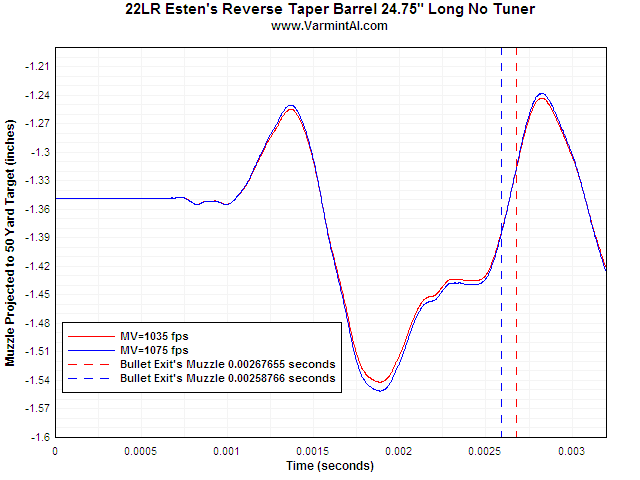M
mks
Guest
Keith
The stethoscope head is attached to the stock, under the action area with tape. That way it would not have any influence on the barrel its self. I am not an engineer, just common sense ( shop teacher) but any thing attached to the barrel would result in false readings. Is that wrong?
Jim
Jim,
The best idea might be to try placing the stethoscope on a fixture below the barrel without touching the barrel. The rearward motion of the barrel could confound the measurement, but with two sensors it might be possible to adjust for this. Getting something useful from sound is a bit of a long shot, but if it's cheap and fun, why not try it?
Keith
PS. You're right, weight on the barrel will change its motion, but if the weight were small, then the change would be small. Or, if you find the tune with the sensor in place, then when you take the sensor off, replace it with an equal amount of weight to keep the tune.



